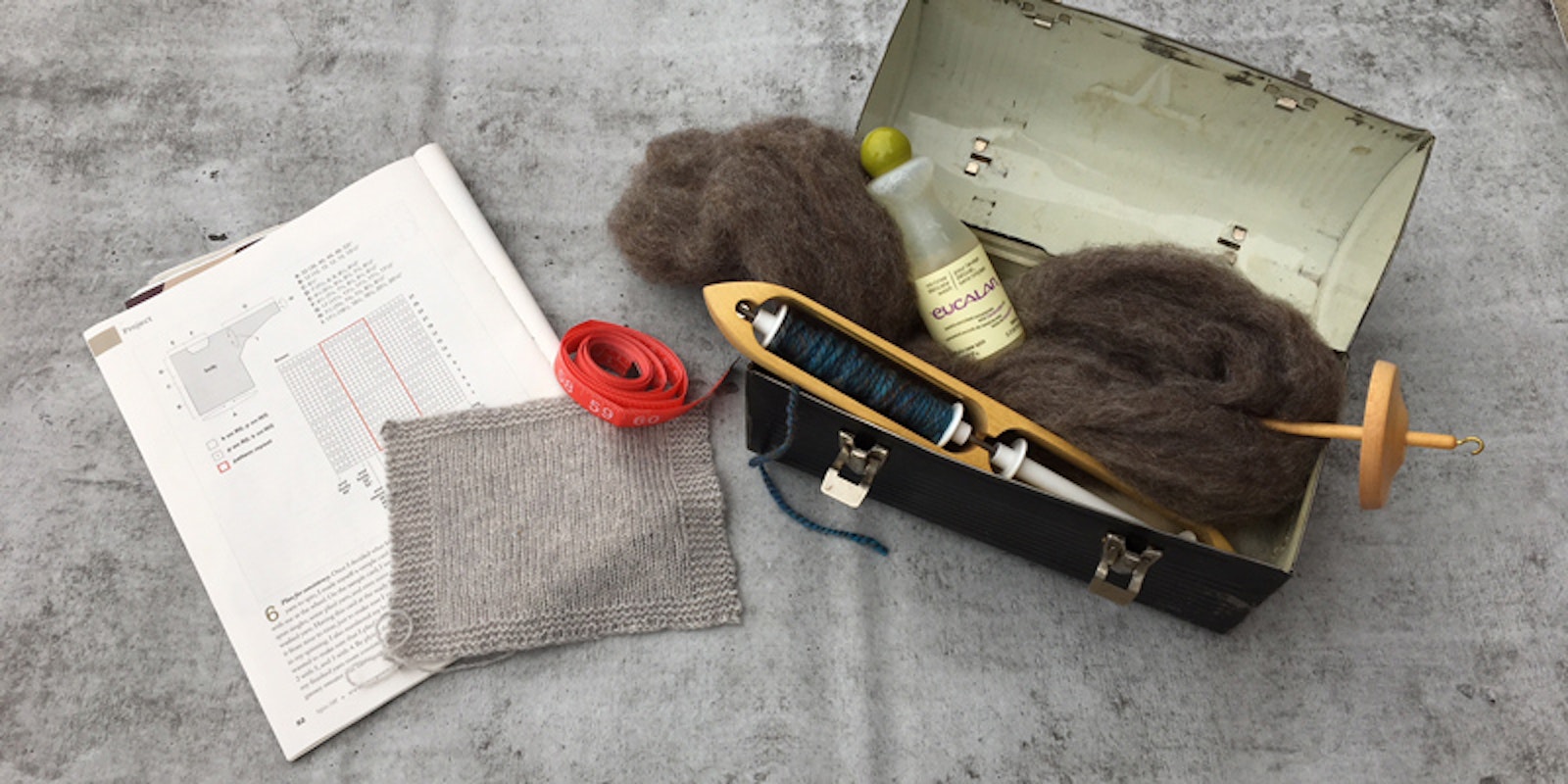Most handspinners aren’t just handspinners. Being a spinner is certainly enough, but most of us either come to spinning from another craft or take up another craft to use all that handspun yarn. When you want to put that yarn to use in a spectacular project, here are 5 skills you’ll want in your toolbox. (Do you agree? What did I miss?)
1. Finishing
You can get by with washing your yarn with a hot soak and a snap, but your yarn can be so much more if you finish it half as carefully as you spun it. What temperature water should you use? Should you treat the skeins gently or rough them up? What about steam? Between what fiber you chose, how you spun it, and what you want to use it for lies a matrix of finishing decisions. The more you know, the better you can decide.
2. Take photos
Pictures or it didn’t happen! That’s the way it feels, anyway, when my Instagram feed is filled with beautiful moody shots of yarn on rough-hewn tables or sassy photos of people wearing their handmade garments. These days, part of the fun of sharing your work is posting about it online, and even an average phone camera produces great results.

When knitting with handspun yarn, starting with a gauge swatch and doing basic math is especially important. Photo by George Boe
3. Do the knitting math
Using a commercial standardized pattern with unique handspun yarn almost always requires some adjustments. Whether it’s the basic algebra of finding a new stitch count for your gauge or figuring out whether you have enough yarn to finish a repeat, getting the most from your skein of handspun yarn is easier with some simple formulas.
4. Alter knitting patterns
It’s heartbreaking enough to find out that a sweater doesn’t fit when you made it with store-bought yarn. But when every inch of the yarn has passed through your hands at least three times, you want the finished product to be sublime. You can leave it to chance or you can make that pattern sing and dance your bidding.

The right combination of handspun yarns on a rigid-heddle loom can be gorgeous, as in Stephanie Flynn-Sokolov’s Soft Breezes Scarf. Photo by Joe Coca
5. Choose yarns for the rigid-heddle loom
Rigid-heddle looms are wonderfully flexible when it comes to yarn. With surprisingly little loom waste, you can mix and match your favorite yarns without letting any go to waste. (Bonus: Once the warp is on the loom, weaving is quick—leaving even more time for spinning.)
Sure, you can spend all of your crafting time spinning. (Sounds delightful!) But when you want to take your spinning to the next level, try an interdisciplinary approach.
Featured Image: What’s in your spinning toolbox? Photo by Sarah Rothberg
Posted January 22, 2018. Updated June 26, 2019.

